Don't wanna be here? Send us removal request.
Text
Hello Alleeya,
I enjoyed reading your final blog this week!
This course has definitely offered new insights and perspectives regarding nature interpretation, specifically as a bridge between individuals and nature. Like you, I believe in evoking emotion from my audience, aiming to establish an emotional connection to generate an appreciation for nature.
Your approach to interpretation, particularly as a professor as an environmental interpreter, intrigued me. I hadn't previously considered this angle, but your explanation of utilizing scientific concepts to instill a sense of responsibility for nature in everyday life is really interesting to me. The opportunity to do that in your role will be very fulfilling, especially with the knowledge you gained from the course.
I admire your commitment to authenticity, given your passions in art and science. I like that you set a clear example of what interests you, how that shapes who you are as an interpreter, and how you will continue to use your passions in the future for your audiences. In addition, your dedication to providing audiences with unbiased information and allowing them to form their own opinions reflects a commitment to professionalism that I also admire. Bias drives subjectivity and makes it challenging for people to create their own opinions. Therefore, I admire your desire to stay truthful and allow people to make opinions for themselves. Each person's interests are unique, and their own personal curiosities drive each person's appreciation and respect towards nature as to why they find it interesting, and thus their ability to formulate their opinions. It all goes hand in hand.
Further, while I agree with the quote you referenced, I think that, specifically in science, there is a balance between observation, where something speaks for itself, and manipulation to discover something new. Observation requires the patience to take in everything around you. You are fully immersing yourself in the natural world without disrespecting it in any way. However, in manipulative studies, that element of respect is not present. So my question to you, as your ideal role as a professor, is, where can that balance between appreciation and respect and manipulation be?
Lastly, being very involved in academics my entire life, I understand the academic challenges and appreciate your efforts in creating a supportive learning environment as a professor. Your approach of allowing people to develop genuine understanding rather than memorizing every fact you teach resonates significantly with my experiences. Although I have been able to perform under challenging conditions, I find I RARELY learn anything from my courses. I find that I gain something from my coursework through engagement and discussion with my peers, like this course.
Thanks so much for sharing your perspectives! This post was really enlightening, and I gained a lot of new insight, as I often do while reading people's blog posts.
Cheers!
Emily
Final Post! My reflection as an interpreter
This course provided me with the opportunities to learn about various learning styles and methods of interpretation, giving me the tools to discover who I am as a nature interpreter (Hooykaas, 2024). My approach as an individual comes from the desire to evoke emotional responses through interpretation, whether that be through art or through teaching scientific concepts (Beck et al. 2018, p.44). Looking back to my second blog post, I described my ideal role as an interpreter being a professor. I still resonate with this role, but the idea of interpretation in less of a directly-academic setting has crossed my mind. I still believe that my ideology of presenting scientific information in a setting for open conversation is most suitable to me. Through this open line of communication surrounding scientific topics, it can open a listener to care about things such as plant nutrients or global warming, to lead them to caring for these topics in day-to-day life (Beck et al. 2018, p.60). In addition to interpretation through speaking, I have realised that my learning styles being tactile/visual really reflects in my art (Hooykaas, 2024). I explained my connection to art and nature interpretation previously in my blog, and I have always known that nature has inspired me to create throughout my life. My art provides me with another outlet to showcase nature interpretation in a physical way that can provoke viewers to ask questions and get curious about nature (Beck et al. 2018, p.229).
Through these two very different paths of interpretation, the responsibilities I uphold are to stay true to my passions and to state unbiased, clear information to my listeners. Staying true to my passions is important for both art and scientific interpretation. If I were to deviate from art that makes me feel fulfilled and from science that applies to concepts I care about it wouldn’t be me. This is a responsibility I have to myself as an individual, and without the passions that drive me to be curious about nature, I would have no role as an interpreter at all. Stating unbiased and clear information is especially true if I am to pursue a professorship in academia. It is a responsibility to pass on information that is factually true so that others can interpret their own opinions off it. Topics that come to mind regarding this include GMO information as well as the various methods of combating climate change. Fulfilling this responsibility can be done through constantly learning, maintaining professionalism, and developing various skill sets to be a credible interpreter (Beck et al. 2018, p.378).
The belief that I feel defines me as an interpreter is that nature is the greatest teacher in balance. When a tree falls, it creates a space for insects and small animals to burrow under, it gives life to fungi and moss, it creates an entirely new ecosystem of life through death. A quote that connects to this belief is “Often the scene interprets itself, so interpreters need not impose.” (Beck et al. 2018, p. 83). I really resonate with this quote because through observing the natural order of life, you learn so many concepts that you can apply without doing anything but taking it all in. On a more cellular level, learning about homeostasis and how plants create antioxidants to keep themselves healthy is applied to human concepts of health constantly. Being taught to eat blueberries as a kid because of their antioxidant potentials, drinking peppermint tea to soothe inflammation in the stomach, health concepts that were learned from nature. I believe that through observing the natural science of life, order can be brought to my own life, and it is a goal to share my interpretation of these instances with others.
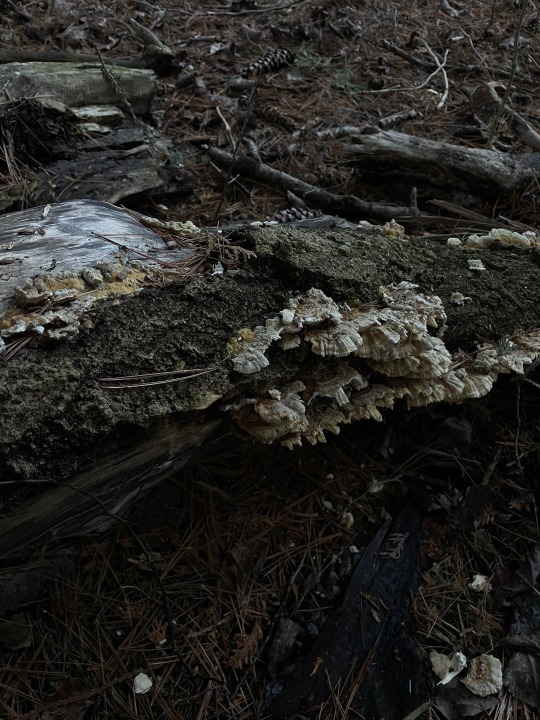
All in all, my ethics as an interpreter lay in being truthful, kind, and curious. I also want to remain aware of the privileges I hold in life, and to attribute credit to those who made my interests available to me. As an interpreter, it is important to me to share the truth with all who listen, even if that truth is ugly. I will share the truth about food processing, land colonisation, and inaccuracy of government regulations where it is due. Learning about the beauties of nature is never without the unfortunate facts that may lay underneath the information. Another area of ethics I feel very strongly about is being mindful of each person’s struggles throughout life. This concept is more for the scenario of me as a professor. I have always had the goal of creating an atmosphere built on actually processing and caring about the information learned, not regurgitating facts to fulfil a standard test. I have had many struggles out of my control throughout my university experience, and while some professors have helped, many haven’t. It is a goal of mine to never be like those people. I want to be able to help students who care about succeeding even when life deals them a bad card, something I wish that could have been done for me. This is a large basis of my ethics as an interpreter, and it drives me forward to reach my goals.
It is bitter-sweet that this is my last post, as I have never had an outlet to share my thoughts on nature in a way like this. It has been very interesting to question areas of interpretation that I had never thought of before, and it has helped me reflect on where I see myself going in the future. I look forward to seeing how all your final posts summarise you as an individual interpreter! Enjoy some photos of nature to end this blog off :)
Alleeya
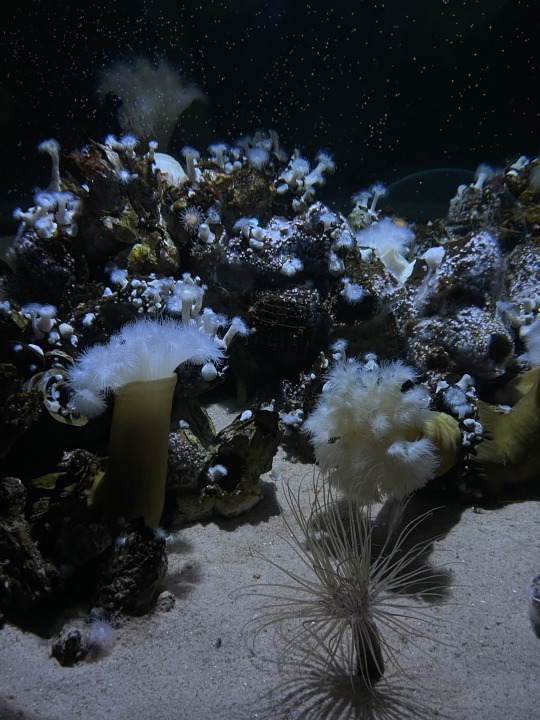

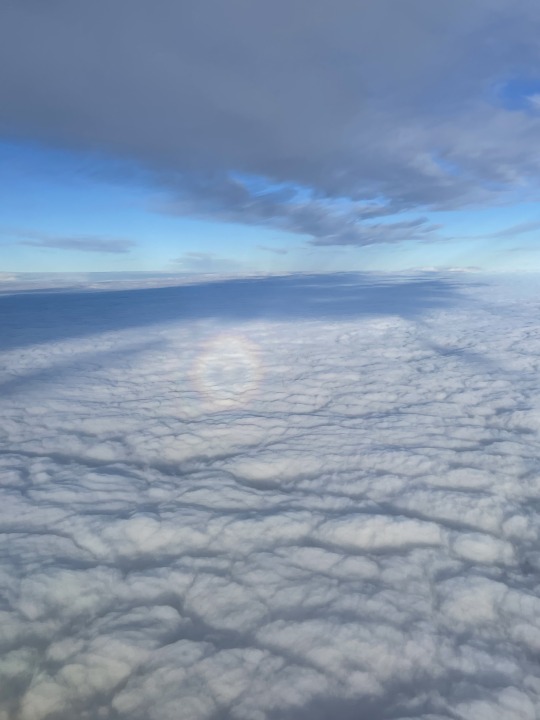
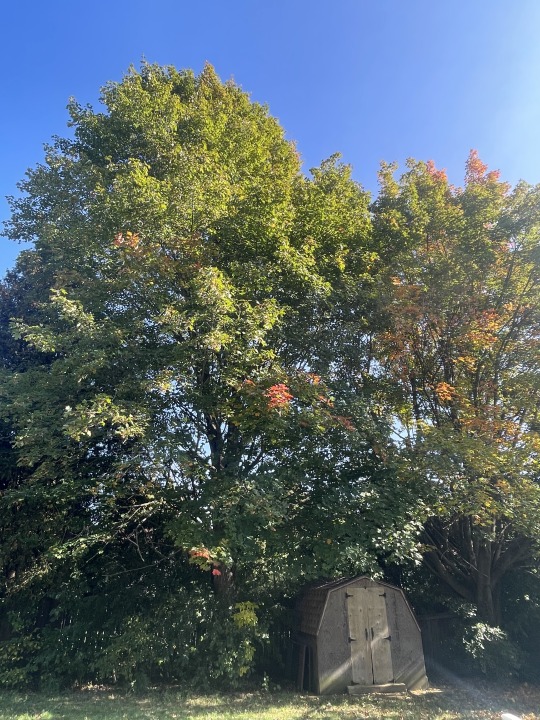
Beck, L., Cable, T. T., & Knudson, D. M. (2018). Interpreting Cultural and Natural Heritage: For a Better World. Sagamore Publishing LLC.
Hooykaas, A. (2024). Nature interpretation. https://courselink.uoguelph.ca/d2l/le/content/858004/Home
7 notes
·
View notes
Text
Hello Grace,
I enjoyed reading your final blog this week!
In regard to your personal ethics, mine have also been evolving over time. Although we had different childhoods, yours spent outdoors and mine spent indoors, we have reached the same standpoint. Like you, my passion and interest in nature lean heavily towards conservation. The fact that something may not be visible to the naked eye does not make it irrelevant; rather, it remains a crucial component of a larger ecosystem that profoundly influences our environment.
I admire your deep appreciation for the intricacies of nature. Only some people can genuinely claim to value every aspect of it, from the simplest to the most complex. Like you, I also share a strong desire to preserve the natural world for future generations. This mutual perspective is why I consider environmental advocacy and education important, particularly in instilling profound respect for nature in younger generations and motivating actions to conserve it. I agree that establishing a connection between audiences and nature is essential to achieving our shared conservation goals.
Your enthusiasm for hands-on learning, especially in the context of nature, resonates deeply with me. As Rodenburg (2019) noted, we are inherently interconnected with the nature surrounding us, and immersion may be the most effective method to foster this connection. According to Beck et al. (2018), people retain information better when engaging multiple senses and directly interacting with their environment. This approach helps individuals appreciate the planet and develop a respect for it, which is crucial from a conservation standpoint.
I also appreciate your interdisciplinary approach to nature interpretation, recognizing that each person learns and interacts with the world differently. In Particular, I think that incorporating indigenous knowledge into this interpretation is a very important approach, given their profound connection with the Earth throughout history. I think that using this type of knowledge to connect people with nature would be incredibly effective, given the storytelling approach Indigenous people take in regards to nature and passing down its importance to future generations.
Additionally, like you, I believe that minimizing human disruption in nature is crucial for preserving our environment and creating space for the wildlife we coexist with. While getting close enough to breathe the same air as an organism is super cool, respect for the wildlife around is perhaps more crucial. Overall, I admire your comprehensive approach to conservation, which involves raising awareness and promoting environmental change to better our planet.
Thank you for your transparency regarding our role as interpreters and the urgency of changing our actions to ensure the sharing of nature with future generations. I enjoyed reading your comprehensive approach to your role as a nature interpreter and your personal ethics.
Thanks so much for sharing Grace!
Emily
References
Beck, L., Cable, T. T., and Knudson, D. M. (2018). Interpreting cultural and natural heritage: For A Better World. Sagamore Publishing.
Rodenburg, J. (2019). Why environmental educators shouldn’t give up hope. CLEARING. https://clearingmagazine.org/archives/14300
09: My final blog!
As I’m getting ready to graduate soon, ready to hopefully go into the world of science and nature interpretation, I can't help but feel both excitement and a bit of nervousness. Reflecting on my journey through university, I realize that my personal ethic has been quietly evolving, shaped by my deep love for nature and my desire to share its beauty with others!
Since I was a kid, I've been really drawn to the outdoors and nature, especially animals. Whether it was chasing butterflies through meadows, building forts in the woods, or simply lying in the grass and watching clouds drift by, nature has always been one of my happy places. As I grew older, my passion for nature grew more into a passion for conservation and environmental advocacy. I think I started to see nature not just as a playground, but as a precious and fragile ecosystem that needed protection. From the smallest hummingbird to the mightiest lion, every creature and every corner of the natural world has become special to me.
As I prepare to step into the role of a nature interpreter in the future, I find myself thinking about a whole new set of questions and responsibilities. What beliefs do I bring to this work? What kind of interpreter do I want to be? At the heart of my personal ethic, I have a passion for the beauty and complexity of nature. I think that every leaf, every rock, every drop of rain is a masterpiece in its own right, deserving of awe and admiration. But my passion also goes beyond just appreciation, it extends to a determination to protect and preserve the natural world for future generations. In my eyes, being a nature interpreter isn't just about pointing out cool animals and pretty flowers (although those are definitely fun parts of the job). It's about creating a sense of wonder and curiosity, giving people a deep connection to the natural world and inspiring others to become passionate stewards of the earth as well (Beck et al., 2018, p. 42).
To achieve these goals, I'm personally a firm believer in the power of hands-on learning. There's just something magical about getting your hands dirty and your feet wet, about feeling the sun on your face and the wind in your hair. Whether it's leading nature walks, conducting field research, or getting to hold and touch cool animals, I'm all about getting out there and getting involved. I think that hands-on experiences are great at creating a sense of connection (GGI Insights, n.d.). They engage multiple senses, promote direct interaction with the environment, and create memorable, immersive experiences that resonate deeply with people (Bloemendaal, 2023). But hands-on learning isn't just about having fun (although, again, it's definitely a perk). It's also about deepening our understanding of the natural world, bettering our observation skills, and creating a sense of empathy for the creatures we share this planet with (GGI Insights, n.d.). After all, it's hard to care about something you've never seen or experienced firsthand.
In addition to hands-on learning, I'm a big fan of interdisciplinary approaches to nature interpretation. The natural world is truly a complicated place, so understanding it requires more than just a basic knowledge of biology or ecology. It requires us to consider the cultural, historical, and social factors that shape our relationship with nature, as well as the ethical implications of our actions (Spokes, 2020). That's why I think it would be important to always be on the lookout for new ways to weave together different disciplines and perspectives in nature interpretation work. Whether it's incorporating indigenous knowledge into nature walks, exploring the intersection of art and science in outreach programs, or delving into the psychology of conservation behaviour in research, it’s important that we build connections between disciplines (Spokes, 2020). Especially as someone who has a passion for science, discussing science in nature interpretation is crucial because it provides a foundation of understanding, creates informed appreciation, and empowers people to make informed decisions about conservation and environmental stewardship.
Of course, no discussion of nature interpretation would be finished without addressing the elephant in the room: ethical wildlife viewing. As someone who's spent more hours than I can count marvelling at the beauty of wild animals and trying to do wildlife photography, I know how tempting it can be to get up close and personal for that perfect shot. But I also know that our desire for a good photo shouldn't come at the expense of the animals we love. That's why I'm committed to practicing responsible wildlife viewing techniques, like keeping a safe distance, minimizing habitat disturbance, and never feeding or approaching wild animals (Burns, 2017).
Finally, I believe that as a nature interpreter, I have a responsibility to address pressing environmental issues like climate change and habitat loss. These are not just abstract concepts or distant threats, but real problems that are already having a huge impact on the world around us. That's why I'm committed to using my platform as a nature interpreter to raise awareness about these issues, to share stories of resilience and adaptation in the face of environmental change, and to inspire other people to take action in their own lives and communities. Because at the end of the day, it's not enough to simply appreciate the beauty of nature, we have to fight for its protection.
Overall, my personal ethic as a nature interpreter is grounded in a deep passion for the natural world, a commitment to hands-on learning and interdisciplinary approaches, a dedication to ethical wildlife viewing, and a passion for environmental advocacy. As I Start this journey, I know that the road ahead will be long and challenging, but I'm ready to face whatever comes my way with determination, curiosity, and a whole lot of love for nature!
Beck, L., Cable, T. T., & Knudson, D. M. (2018). Interpreting cultural and natural heritage: For A Better World (pp. 42). Sagamore Publishing.
Bloemendaal, M. (2023, March 5). Unlocking the Power of Hands-On Learning: Benefits, Activities, and Examples. Studio Why. https://studiowhy.com/unlocking-the-power-of-hands-on-learning-benefits-activities-and-examples/
Burns, G. L. (2017). Ethics and Responsibility in Wildlife Tourism: Lessons from Compassionate Conservation in the Anthropocene. Wildlife Tourism, Environmental Learning and Ethical Encounters, 213-220. https://doi.org/10.1007/978-3-319-55574-4_13
Conservation Education: Young People for Environmental Stewardship. (2024, March 8). Gray Group International. Retrieved March 18, 2024, from https://www.graygroupintl.com/blog/conservation-education#:~:text=Hands%2Don%20learning%20and%20outdoor%20experiences%20provide%20learners%20with%20opportunities,sense%20of%20responsibility%20and%20stewardship
Spokes, M. (2020, October 23). The interdisciplinary path to a more diverse conservation movement. Conservation Optimism. https://conservationoptimism.org/the-interdisciplinary-path-to-a-more-diverse-conservation-movement/
13 notes
·
View notes
Text
09: My final blog!
As I’m getting ready to graduate soon, ready to hopefully go into the world of science and nature interpretation, I can't help but feel both excitement and a bit of nervousness. Reflecting on my journey through university, I realize that my personal ethic has been quietly evolving, shaped by my deep love for nature and my desire to share its beauty with others!
Since I was a kid, I've been really drawn to the outdoors and nature, especially animals. Whether it was chasing butterflies through meadows, building forts in the woods, or simply lying in the grass and watching clouds drift by, nature has always been one of my happy places. As I grew older, my passion for nature grew more into a passion for conservation and environmental advocacy. I think I started to see nature not just as a playground, but as a precious and fragile ecosystem that needed protection. From the smallest hummingbird to the mightiest lion, every creature and every corner of the natural world has become special to me.
As I prepare to step into the role of a nature interpreter in the future, I find myself thinking about a whole new set of questions and responsibilities. What beliefs do I bring to this work? What kind of interpreter do I want to be? At the heart of my personal ethic, I have a passion for the beauty and complexity of nature. I think that every leaf, every rock, every drop of rain is a masterpiece in its own right, deserving of awe and admiration. But my passion also goes beyond just appreciation, it extends to a determination to protect and preserve the natural world for future generations. In my eyes, being a nature interpreter isn't just about pointing out cool animals and pretty flowers (although those are definitely fun parts of the job). It's about creating a sense of wonder and curiosity, giving people a deep connection to the natural world and inspiring others to become passionate stewards of the earth as well (Beck et al., 2018, p. 42).
To achieve these goals, I'm personally a firm believer in the power of hands-on learning. There's just something magical about getting your hands dirty and your feet wet, about feeling the sun on your face and the wind in your hair. Whether it's leading nature walks, conducting field research, or getting to hold and touch cool animals, I'm all about getting out there and getting involved. I think that hands-on experiences are great at creating a sense of connection (GGI Insights, n.d.). They engage multiple senses, promote direct interaction with the environment, and create memorable, immersive experiences that resonate deeply with people (Bloemendaal, 2023). But hands-on learning isn't just about having fun (although, again, it's definitely a perk). It's also about deepening our understanding of the natural world, bettering our observation skills, and creating a sense of empathy for the creatures we share this planet with (GGI Insights, n.d.). After all, it's hard to care about something you've never seen or experienced firsthand.
In addition to hands-on learning, I'm a big fan of interdisciplinary approaches to nature interpretation. The natural world is truly a complicated place, so understanding it requires more than just a basic knowledge of biology or ecology. It requires us to consider the cultural, historical, and social factors that shape our relationship with nature, as well as the ethical implications of our actions (Spokes, 2020). That's why I think it would be important to always be on the lookout for new ways to weave together different disciplines and perspectives in nature interpretation work. Whether it's incorporating indigenous knowledge into nature walks, exploring the intersection of art and science in outreach programs, or delving into the psychology of conservation behaviour in research, it’s important that we build connections between disciplines (Spokes, 2020). Especially as someone who has a passion for science, discussing science in nature interpretation is crucial because it provides a foundation of understanding, creates informed appreciation, and empowers people to make informed decisions about conservation and environmental stewardship.
Of course, no discussion of nature interpretation would be finished without addressing the elephant in the room: ethical wildlife viewing. As someone who's spent more hours than I can count marvelling at the beauty of wild animals and trying to do wildlife photography, I know how tempting it can be to get up close and personal for that perfect shot. But I also know that our desire for a good photo shouldn't come at the expense of the animals we love. That's why I'm committed to practicing responsible wildlife viewing techniques, like keeping a safe distance, minimizing habitat disturbance, and never feeding or approaching wild animals (Burns, 2017).
Finally, I believe that as a nature interpreter, I have a responsibility to address pressing environmental issues like climate change and habitat loss. These are not just abstract concepts or distant threats, but real problems that are already having a huge impact on the world around us. That's why I'm committed to using my platform as a nature interpreter to raise awareness about these issues, to share stories of resilience and adaptation in the face of environmental change, and to inspire other people to take action in their own lives and communities. Because at the end of the day, it's not enough to simply appreciate the beauty of nature, we have to fight for its protection.
Overall, my personal ethic as a nature interpreter is grounded in a deep passion for the natural world, a commitment to hands-on learning and interdisciplinary approaches, a dedication to ethical wildlife viewing, and a passion for environmental advocacy. As I Start this journey, I know that the road ahead will be long and challenging, but I'm ready to face whatever comes my way with determination, curiosity, and a whole lot of love for nature!
Beck, L., Cable, T. T., & Knudson, D. M. (2018). Interpreting cultural and natural heritage: For A Better World (pp. 42). Sagamore Publishing.
Bloemendaal, M. (2023, March 5). Unlocking the Power of Hands-On Learning: Benefits, Activities, and Examples. Studio Why. https://studiowhy.com/unlocking-the-power-of-hands-on-learning-benefits-activities-and-examples/
Burns, G. L. (2017). Ethics and Responsibility in Wildlife Tourism: Lessons from Compassionate Conservation in the Anthropocene. Wildlife Tourism, Environmental Learning and Ethical Encounters, 213-220. https://doi.org/10.1007/978-3-319-55574-4_13
Conservation Education: Young People for Environmental Stewardship. (2024, March 8). Gray Group International. Retrieved March 18, 2024, from https://www.graygroupintl.com/blog/conservation-education#:~:text=Hands%2Don%20learning%20and%20outdoor%20experiences%20provide%20learners%20with%20opportunities,sense%20of%20responsibility%20and%20stewardship
Spokes, M. (2020, October 23). The interdisciplinary path to a more diverse conservation movement. Conservation Optimism. https://conservationoptimism.org/the-interdisciplinary-path-to-a-more-diverse-conservation-movement/
13 notes
·
View notes
Text
Personal Ethics and Nature Interpretation
Through participating in this course, I have gained insights into various aspects of environmental interpretation and the roles and responsibilities of nature interpreters. The readings, discussion, and different components we have explored in this course have influenced my personal ethics regarding interpretation in the future. Although I have always found a great interest in this field from an outside perspective, I am still determining if I would pursue a role as an interpreter as a career. However, if I were to take up a position as a nature interpreter, it would be focused on environmental education and public outreach because those are incredibly important to the community from a conservation standpoint. In this position, I would consider and include the questions asked in the prompt.
Focused on pursuing a career in conservation, I consider passion to be a central skill in nature interpretation. My biggest belief is that motivating action in an audience to conserve our environment is done through the enthusiastic delivery of a topic. As discussed in the textbook, sharing genuine love for a topic or subject engages an audience deeply with the topic (Beck et al., 2018). Without that genuine enthusiasm, the interpretive experience is limited. To create a connection with nature and instill an appreciation for the natural world, I would create experiences that connect tangible elements of a place and intangible meanings, as explained by Beck et al. (2018). I hope that by doing this, I can make the interpretive experiences enjoyable and memorable and ignite curiosity in my audience. Igniting this curiosity I think will allow my audience to develop their own personal connections with the world around them. In this way, as an interpreter I could create a community of individuals who share a passion for conservation and appreciation for nature, and potentially transform their attitudes and behaviors towards the environment.
In addition to passion, I prioritize respect for nature. During discussions through Tumblr with my peers, I have come to recognize the importance of instilling this respect as an interpreter, especially in a society facing habitat destruction and other environmental challenges. While some cultures (i.e., First Nations) already embody a deep sense of respect for the environment, it is our responsibility as interpreters to promote conservation and respect for nature, which can be done through interpretation.
Drawing from my own experiences as a second-generation Canadian and my family background, I understand the significance of reducing barriers to accessibility, whether they are cultural, economic, or physical (Beck et al., 2018). As an interpreter, this requires me to know my audience and adapt my approach accordingly. Increasing the number of culturally diverse staff, offering interpretation in different languages, curating community events celebrating cultures, providing transportation, and involving individuals cooperatively could serve our communities more effectively (Beck et al., 2018). By offering diverse forms of interpretation and ensuring accessibility, we can reach a broader audience and allow all individuals to have a ‘sense of place’ in nature.
Along with reducing barriers, my other responsibility as an interpreter is tailoring interpretation approaches to appeal to different learning styles, thereby promoting inclusivity and engagement. By utilizing various forms of media and various artistic mediums, I can connect with more than one demographic and reach a larger audience. Everyone is unique in how they learn and connect with the world around them, making nature interpretation challenging. However, my responsibility as an interpreter is to foster that connection with each member of an audience as best I can, ensuring that everyone feels valued and considered in the interpretive process.
Regarding my beliefs and responsibilities, I am particularly drawn to promoting conservation and respectful engagement with the environment, especially among children and through citizen science initiatives. Growing up, I did not have the opportunity or interest to engage in nature, as I was more interested in indoor activities and sports. Although I did not possess a natural innate appreciation for the environment, as explained by Rodenburg (2019), it is something I believe is essential to improve our environment in the future. Compared to older populations, children approach nature with curiosity and a desire to explore, as I have observed in my interactions with my young cousins and in my role as an environmental educator during my internships (Rodenburg, 2019). Therefore, I agree with Rodenburg (2019) that instilling a connection with nature at a young age is important to cultivate a lifelong appreciation for the environment and promote sustainable attitudes and behaviours.
From my experience, environmental education plays a crucial role in reinforcing this connection with nature in children. During my internships, I had the opportunity to engage with children of local communities and share the importance of proper plastic management and its environmental impact. I gained first-hand experience with environmental education and cultivating a connection between children and their environment, although I did not live on the island I worked on.
In addition to this, from a conservation standpoint, I think that citizen science initiatives also provide accessible opportunities for various demographics (including children) to engage with the environment (Merenlender et al., 2016; Wals et al., 2014). These can be as simple as applications like iNaturalist. Although self-guided, they can empower individuals to develop an appreciation for nature and take action for conservation, which I believe is the most important. These approaches also force individuals to immerse themself in nature, facilitating a deeper connection with the environment, ideally filled with passion and respect.
This course has introduced me to concepts and approaches I had yet to encounter. The discussion on this platform has provided valuable perspectives that have enabled me to integrate these concepts and insights into my ideal role as a successful nature interpreter.
Thanks to everyone for their responses and engaging with my posts. I have had a blast reading everything and seeing what everyone else has to share. Good luck with the rest of your semester!
References
Beck, L., Cable, T. T., and Knudson, D. M. (2018). Interpreting cultural and natural heritage: For A Better World. Sagamore Publishing.
Rodenburg, J. (2019). Why environmental educators shouldn’t give up hope. CLEARING. https://clearingmagazine.org/archives/14300
Merenlender, A. M., Crall, A. W., Drill, S., Prysby, M., and Ballard, H. (2016). Evaluating environmental education, citizen science, and stewardship through naturalist programs. Conservation Biology, 30(6), 1255–1265. https://doi.org/10.1111/cobi.12737
Wals, A. E. J., Brody, M., Dillion, J., and Stevenson, R. B. (2014). Convergence Between
Science and Environmental Education. Science 344, 583-584. DOI:10.1126/science.1250515
1 note
·
View note
Text
Hey Natalie,
I loved reading your post this week! Bioluminescence is definitely fascinating, and it was actually going to be my second topic if I had not chosen what I wrote about.
Natalie, your vivid description of bioluminescence made me feel like I was right there with you, experiencing it firsthand. Have you personally ever seen bioluminescence? Your ability to transport your readers into the scene is truly remarkable!
I also enjoyed how you discussed the different purposes of bioluminescence, ranging from attracting meters to warding off predators. It is interesting how versatile its function is and how it differs between species. Learning about bioluminescence in school, I never knew about other species, such as the sperm whale you mentioned.
To answer your question, we can look at the way nature changes over time to illuminate the darkest places of our lives. Take the weather recently, for example, which has flipped between warm and sunny and cold and rainy. The way it fluctuates is unpredictable, similar to the ways in which our lives can change. That is to say that a sunny day can be right around the corner, even when we least expect it! Patience is everything.
The Enchanting World of Bioluminescence!
Hi friends!!
Welcome back to another week of blogging… I can’t believe this is the 9th week of blogging! Time really does fly.
Today I am going to introduce you all to the captivating and mesmorizing world of Bioluminescence! I remember learning about this in a documentary after seeing photos online of bioluminescent beaches and it is one of the most fascinating phenomenons ever!
To begin, picture this: a moonless night, the ocean gently lapping at the shore, and suddenly, the water bursts into a mesmerizing display of ethereal blue-green light. This is not a scene from a sci-fi movie; it's the magical world of bioluminescence! Bioluminescence is the ability of living organisms to produce light and can be encountered in summer evenings from the flickering lights of fireflies, or in the depths of the ocean from bacteria and sharks (NOAA, 2017).
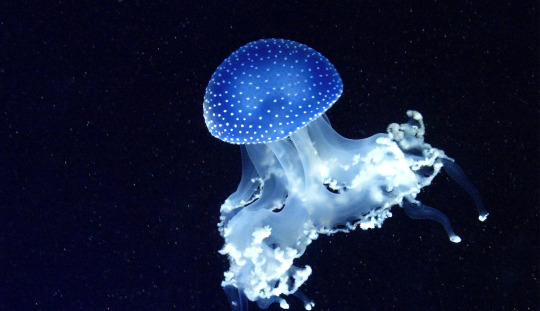
What truly sets bioluminescence apart is its sheer beauty and versatility. From attracting mates, luring in prey, communicating with fellow organisms or warding off predators, bioluminescence serves a variety of purposes in the natural world (National Geographic, n.d). For example, the vampire squid uses this as a defensive behaviour as instead of ejecting dark ink to defend against predators, they instead eject sticky bioluminescent mucus which can confuse and delay predators (National Geographic, n.d). Additionally, another really cool theory is that some biologists theorize that some species who are not bioluminescent themselves, take advantage of species that are. For example, a sperm whale might surround itself with bioluminescent plankton in order to eat fish who are the planktons predators as their glowing alerts the whale that fish are nearby (National Geographic, n.d). It is so fascinating to me how the language of light can work in such enticing ways.
So, the next time you find yourself under the starry night sky or lurking out into the ocean, remember the hidden world of bioluminescense that lies just beyond our sight. It’s a good reminder that even in the darkest corners of the Earth, there is still light to be seen, illuminating the beauty of the world around us.
To end this blog, I wanted to leave you with a question to ponder... in what ways can we draw inspiration from nature's ability to illuminate even the darkest of places within our own lives? What is the hidden symbolism here?
Thanks for reading and looking forward to hearing back!!!
Natalie
Works Cited
NOAA. (2017). What is bioluminescence? National Ocean Service. https://oceanservice.noaa.gov/facts/biolum.html
National Geographic. (n.d). Bioluminescence is light emitted by living things through chemical reactions in their bodies. National Geographic Education. https://education.nationalgeographic.org/resource/bioluminescence/
11 notes
·
View notes
Text
The Enchanting World of Bioluminescence!
Hi friends!!
Welcome back to another week of blogging… I can’t believe this is the 9th week of blogging! Time really does fly.
Today I am going to introduce you all to the captivating and mesmorizing world of Bioluminescence! I remember learning about this in a documentary after seeing photos online of bioluminescent beaches and it is one of the most fascinating phenomenons ever!
To begin, picture this: a moonless night, the ocean gently lapping at the shore, and suddenly, the water bursts into a mesmerizing display of ethereal blue-green light. This is not a scene from a sci-fi movie; it's the magical world of bioluminescence! Bioluminescence is the ability of living organisms to produce light and can be encountered in summer evenings from the flickering lights of fireflies, or in the depths of the ocean from bacteria and sharks (NOAA, 2017).

What truly sets bioluminescence apart is its sheer beauty and versatility. From attracting mates, luring in prey, communicating with fellow organisms or warding off predators, bioluminescence serves a variety of purposes in the natural world (National Geographic, n.d). For example, the vampire squid uses this as a defensive behaviour as instead of ejecting dark ink to defend against predators, they instead eject sticky bioluminescent mucus which can confuse and delay predators (National Geographic, n.d). Additionally, another really cool theory is that some biologists theorize that some species who are not bioluminescent themselves, take advantage of species that are. For example, a sperm whale might surround itself with bioluminescent plankton in order to eat fish who are the planktons predators as their glowing alerts the whale that fish are nearby (National Geographic, n.d). It is so fascinating to me how the language of light can work in such enticing ways.
So, the next time you find yourself under the starry night sky or lurking out into the ocean, remember the hidden world of bioluminescense that lies just beyond our sight. It’s a good reminder that even in the darkest corners of the Earth, there is still light to be seen, illuminating the beauty of the world around us.
To end this blog, I wanted to leave you with a question to ponder... in what ways can we draw inspiration from nature's ability to illuminate even the darkest of places within our own lives? What is the hidden symbolism here?
Thanks for reading and looking forward to hearing back!!!
Natalie
Works Cited
NOAA. (2017). What is bioluminescence? National Ocean Service. https://oceanservice.noaa.gov/facts/biolum.html
National Geographic. (n.d). Bioluminescence is light emitted by living things through chemical reactions in their bodies. National Geographic Education. https://education.nationalgeographic.org/resource/bioluminescence/
11 notes
·
View notes
Text
08: Lights in Our Night Sky
Of all the things I have encountered in my studies and nature explorations, shooting stars stand out as the most fascinating parts of nature. Growing up in the GTA, light pollution often covered the night sky, making starry nights rare. However, in 2018, during a visit to my aunt's cottage in late August, I finally saw a sky FULL of stars. My aunt told me it was the best time of year to witness shooting stars. Never having seen one before, I was very excited. After patiently waiting for 30 minutes, the first one caught my eye, and I was hooked. Since then, I have eagerly anticipated our annual visits, ensuring they coincide with the optimal weekend to see these stars travel across the night sky.
Though commonly misconceived as stars, shooting stars are, in fact, not stars at all, which is what I find most intriguing about them. So if not a shooting star, then what are they? Astronomers classify them as rock, dust, or ice fragments that enter the Earth's atmosphere at incredibly high speeds (The Planetary Society, n.d.). These are meteoroids and meteors! As the rock, dust or ice travels through space it is referred to as a meteoroid (U.S. Department of the Interior, n.d.). As it enters the Earth's atmosphere it becomes a meteor, which generates the short-lived trail of light across the night sky as it burns at high temperatures – coining the name shooting star (Cool Cosmos, n.d.; Whitlock, n.d.). Shooting stars can be seen on any given night in a non-light-polluted area. However, there are certain times of year when you can see several of them at a time. This predictable phenomenon is called a meteor shower. It occurs when the Earth passes through a trail of comet or asteroid debris (Whitlock, n.d.). These showers are often named after the constellation of which they appear to originate from, which is referred to as the "radiant" point (The Planetary Society, n.d.). These specific points reflect the Earth's journey around the Sun (Whitlock, n.d.).
Beyond their scientific marvel, what truly fascinates me about shooting stars is their rich cultural and spiritual significance. Across various cultures, from the Greeks and Egyptians to the Chinese, stars have been assigned specific meanings and stories. They have been seen as symbols of wish fulfillment, messengers, or spiritual guides. For some, they serve as a reminder of the universe's guiding presence. This profound connection between nature and human experience, particularly the sense of awe and wonder they inspire and how that catalyzes creativity and perspective (Beck et al., 2018). In this way, relationships can be created between individuals and the environment, whether physical or spiritual.
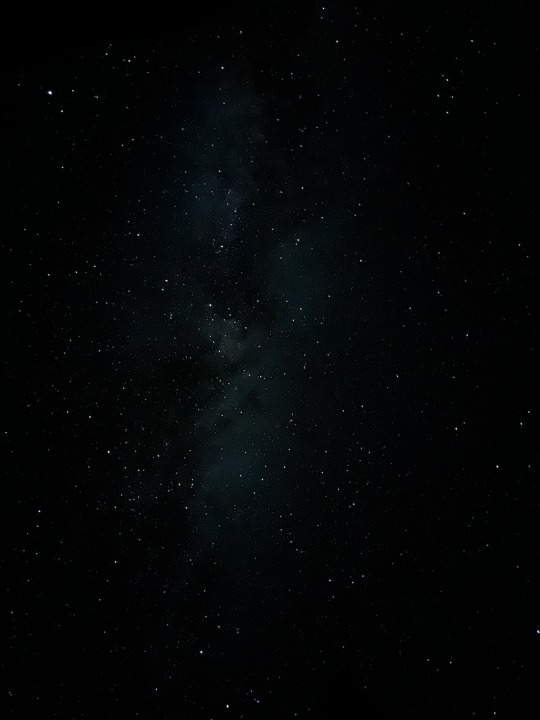
References
Beck, L., Cable, T. T., and Knudson, D. M. (2018). Interpreting cultural and natural heritage:
For A Better World. Sagamore Publishing.
Cool Cosmos. (n.d.). Ask an astronomer.
Henriques, M. (2023). The spiritual significance of seeing shooting stars. Medium.
ting-stars-35526b1acd02#:~:text=One%20of%20the%20most%20common,pure%20h
eart%20and%20sincere%20intent
The Planetary Society. (n.d.). What is a meteor shower?
U.S. Department of the Interior. (n.d.). I didn’t know that!: Shooting stars (U.S. National Park
Service). National Parks Service.
Whitlock, L. (n.d.). What causes a “Falling star”? NASA.
0 notes
Text
Hey Sydney!
I really enjoyed your blog post this week! It is always so lovely to find people who really love music and listen to it all the time. Similar to you, I am always on Spotify. So much so that I think my screen time is the greatest on Spotify.
I liked how you first described the connection between nature and music to answer the first question, especially to create the basis for the rest of the topics discussed in your post. As you mentioned, the first thing I thought of when I thought about music in nature was the rain and leaves rustling. It is definitely essential to recognize how intertwined music is in nature and how many of its sounds generate a specific and unique atmosphere.
Providing the definition of music as outlined on the Course Link page was also helpful in describing music’s impact on its ability to evoke emotion, specifically the tie to cognitive purposes. As a reader, I was able to understand the importance of the two aspects you mentioned.
Personally, I have never heard the song ‘Red Solo Cup’ before, but I can definitely see how it takes you back to spending time with your family around the campfire. I love your connection with this song and its specific meaning to you.
Thanks for sharing this week!
Blog 7
Hey everyone! As someone who is constantly listening to music, I am so excited to talk about how nature and music are related and to see how others view this relationship! Music and nature share an intricate and profound relationship, woven together by rhythm, melody, and harmony. Nature, with its vast symphony of sounds, serves as a muse for musicians across so many cultures and genres. From the rustling leaves in a gentle breeze to the rhythmic patter of raindrops, nature’s melodies can be a source of inspiration. In music, the influence of nature can be found in compositions that mimic the sounds of nature or evoke emotions associated with different landscapes. Composers often use techniques to create the call of birds, the flow of rivers, or the patter of raindrops.
Music is defined as, “patterns of sound varying in pitch and time produced for emotional, social, cultural, and cognitive purposes” (Hookyaas, 2024). Music and nature, in their respective ways, possess a unique ability to bring people together, fostering connections that transcend boundaries. Music, with its universal language, serves as a powerful conduit for emotional expression, providing a shared experience that resonates across cultures and societies. Similarly, nature has a remarkable capacity to unit people through shared awe and appreciation. Nature becomes a common ground where individuals from diverse backgrounds can come together, sharing a sense of wonder and interconnectedness.
The song “Red Solo Cup” by Toby Keith immediately takes me back to campfires up north with my family on hot summer nights. This country song is a staple in my family gatherings during our annual camping trips. The memories that resonate with this song involve the crackling flames, the scent of burning wood, and the laughter of family and friends. The second this song starts playing, I am brought back to sitting around the campfire. The lyrics, though seemingly light-hearted, carry a deeper meaning in the context of our campfire traditions. The chorus, celebrating the red solo cup, acts as a symbol of togetherness and shared experiences in nature. While listening to this song, I can visualize the fire, the landscape of the tall trees, the smell of the burning wood, and so many more memories that I will never forget.
Here is one of the images from a campfire a few years back!
Hooykaas, A. (2024). Unit 7: Nature interpretation through music. University of Guelph.
2 notes
·
View notes
Text
Unit 07: Nature and Music
Music is deeply intertwined with nature, and my time spent in Mexico during reading week reminded me of that. From pelicans squawking to waves crashing loudly on the shore or rain hitting the pavement, nature's sounds are diverse. In my opinion, that "atmosphere" created by nature is attributed to its "music." Each environment creates its own unique music, evoking emotions and memories in those who experience it. No one environment produces the exact same music, and one environment's music is never the same each time. Gray et al. (2001) note how nature's unique sounds have sparked curiosity throughout history. For instance, the study of communication among aquatic mammals like dolphins and whales has long been a focus. From the majestic mating songs of blue whales to the distinctive clicks of dolphins, these sounds compose the underwater world's music. Recently, I had the privilege of listening to humpback whale mating songs in Puerto Vallarta. Accompanied by a marine biologist or a nature interpreter, the experience was enlightening. Through his expertise, he skillfully guided the group through the whale-watching tour, engaging people of all backgrounds and instilling a sense of curiosity and respect for nature. By sharing his passion through personal anecdotes, he illustrated the real-world significance of our course content in connecting humans with the natural world.
Like nature interpretation, music affects our minds through emotion (Gray et al., 2001). While initially challenging to pinpoint where nature is in music, the reading by Gray et al. (2001) highlighted its presence. Musicians and composers often draw inspiration from nature's sounds, incorporating them into their compositions to evoke specific moods or atmospheres. In that regard, it's similar to poetry, incorporating certain words like "dark clouds" or "rain" to evoke a feeling of sadness and despair.
Another factor I had yet to consider, explained by Gray et al. (2001), was that nature's unique sounds mimic those in an orchestra, with each creature and element contributing its own distinctive voice. Just as musicians use different instruments to create harmonious melodies, nature orchestrates its own music.
Reflecting on personal experiences, certain songs transport us back to nature. As someone who grew up playing different instruments, the melody of music sticks out to be more than lyricism does. Through playing guitar, I have come to appreciate songs that involve plucking each string, each evoking a sense of connection to the natural world. One such song that immediately conjures images of rolling mountains and lush green grass is “Edelweiss” from The Sound of Music. The melody resonates with feelings of peace and tranquillity, reminiscent of the landscapes portrayed in the film.
References
Gray, P. M., Krause, B., Atema, J., Payne, R., Krumhansl, C., & Baptista, L. (2001). The Music of Nature and the Nature of Music. Science, 291(5501), 52. https://link-gale-com.subzero.lib.uoguelph.ca/apps/doc/A69270354/AONE?u=guel77241&sid=bookmark-AONE&xid=fb9366a8
4 notes
·
View notes
Text
Hey Heather,
I completely agree with your perspective that dismissing the past with the phrase “past is in the past” is inadequate. Embracing the lessons of history is important for personal understanding and that of society. Unfortunately, an inability to learn from the past makes history repeat itself. Do you think society’s disregard for the connection between natural resources and history has contributed to the planet’s degradation? And is there perhaps more we can do as interpreters to help share history and preserve future history?
In your interpretation of the quote, focusing on the integrity of ancient things, objects or not, it is important to maintain accuracy and respect while interpreting history. Although, in the present, history is something belonging to us as a community, being accessible to everyone, it is important to remember it was once an experience in part of a smaller community or even just to an individual. With that personal connection it may possess to a person or a different community, avoiding bias or personal attachment, as you said, is essential.
To answer your question, when I travel, I often keep a journal of what I did that day and include trinkets (i.e. train tickets, receipts, postcards) to look back on when I want to be “transported” back somewhere I have been.
To learn from the past is to better the future...
This week we were tasked to pull apart and inspect the following quote:
There is no peculiar merit in ancient things, but there is merit in integrity, and integrity entails the keeping together of the parts of any whole, and if these parts are scattered throughout time, then the maintenance of integrity entails a knowledge, a memory, of ancient things. …. To think, feel or act as though the past is done with, is equivalent to believing that a railway station through which our train has just passed, only existed for as long as our train was in it.
(Edward Hyams, Chapter 7, The Gifts of Interpretation)
To start, it makes sense that there is no particular worth in old things like artifacts, however there is worth in integrity, and integrity means keeping together the parts of a whole. This means that in order to maintain the integrity of a historical event, we need to maintain those ancient things that make it what it is. In order to maintain the integrity of the whole, you have to remember why it was ever important in the first place, and that is what makes it important to give merit to the ancient things that make up a whole. In the sciences, we learn about system thinking, and that the whole is merely the sum of its parts. In order to properly remember and interpret history, you have maintain the integrity of all the little things that make that historical event important.
To say that “the past is in the past” is to say that moments are only significant or important if they happen directly to you, and that there is no merit in remembering history, as we weren’t there and therefore it has nothing to do with us. In reality, interpreting history helps us understand ourselves, where we have been and what makes us who we are (Beck and Cable, 2018). History allows us to find inspiration in the stories of creators, leaders and survivors. Interpreting the past gives us the opportunity to learn from others’ mistakes and successes, and create a better future using that knowledge.
One of the most important lessons I took from this week’s content is that we need to always consider when interpreting history is to make sure we are doing so accurately and respectfully. The lessons we can learn from the past can be powerful, and it’s important that we’re portraying the past in the way the story was meant to be told, and avoid bias or personal attachments.
Beck and Cable (2018) said that “every natural site has a history and every historical site has natural resources.” I thought this quote connected this week’s content with past content. Although we have been focused so far mainly on how to interpret nature to others, history and nature have always been intertwined, and it is important as an interpreter to be comfortable with both. Tied into this concept (and every concept) is the impact of privilege that we talked about a few weeks ago. In Canada, it is always important to be aware and mindful that the nature and history that we are interpreting has been skewed by colonialism. One of the most respectful things we can do as interpreters is ensure that the stories we are telling about the history of the land reflects the actual truth.
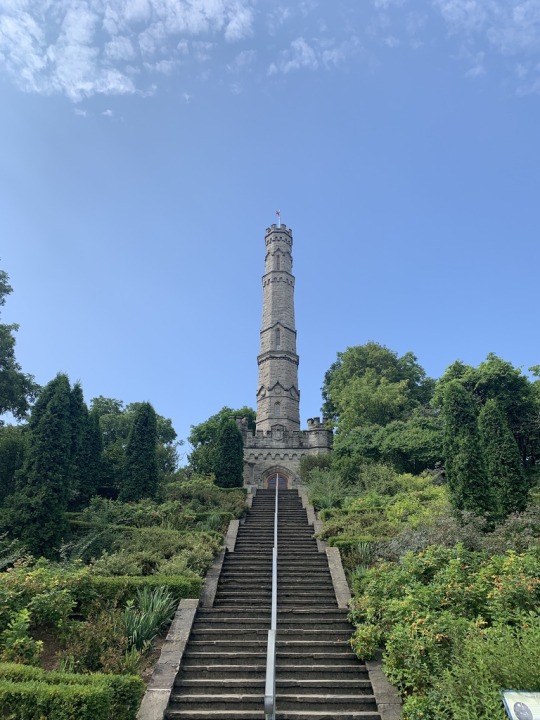
Besides first-person and third-person interpretation (Beck and Cable, 2018) I think that writing is one of the most common types of interpretation of history (and nature) that we see in the world. All over museums and archives, natural parks and conservation areas, the written word can be found interpreting what you are looking at. Interpreting through the written word makes it possible for there to be an absence of a live interpreter while at the same time forcing a person to pause and interact with the item or place, as well as capture someone’s attention, so that they might learn something new (Hooykaas, 2024). Writing plays an important role in the interpretation of both nature and history, and is also something that helps keep memories alive.
What’s one way you have (or someone you know, or somewhere you’ve been) used writing as a way to interpret nature or history?
One way I interpret through writing is to write down important memories I’ve had (both good and bad) and that way I can go back and reminisce or pull guidance from an experience I’ve lived through :)
- All for now!
Beck, L., Cable, T. T., & Knudson, D. M. (2018). Interpreting cultural and natural heritage: For A Better World. SAGAMORE Publishing.
(Edward Hyams, Chapter 7, The Gifts of Interpretation)
Hooykaas, A. (2024). Unit 06: Nature Interpretation through History. [Lecture notes]. ENVS3000 Nature Interpretation. University of Guelph.
11 notes
·
View notes
Text
Hi Sharan,
I think my schooling definitely shaped my learning style. I think as things becomes a bit less hands on in high school and in first year because of the pandemic my learning style shifted more towards visual. But I do think I definitely appreciate and enjoy hands on learning or self-directed learning more so now.
Unit 2: My Ideal Role of Environmental Interpreter
While reflecting on my experiences with others' environmental interpretations, the memories that linger are those of connections between tangible elements of a place and intangible meanings (Beck et al., 2018). In this way, the interpreter planted a seed to evoke thought so as to foster a revelation, personal understanding, and feeling. However, not everyone grows their roots the same way. Individuals are unique in their learning styles, which was highlighted when completing the “What's Your Learning Style?” quiz. Just as people grow roots in different ways, so too do they connect with and interpret their surroundings uniquely. Acknowledging this diversity is crucial, especially when acting as an interpreter for a place. While a location might speak for itself in some instances, it is equally important to tailor interpretations to resonate with the audience, sparking a connection that evokes emotion—a gift of a spark (Beck et al., 2018).
As an interpreter, my goal is to have visitors able to convey significance, by being able to appeal to their emotions and allowing them to create tangible connections with the environment. Drawing inspiration from my Montessori upbringing, I value the natural curiosity to learn, which I believe is crucial for environment interpretation (Beck et al., 2018). To enrich visitor experiences, I intend to provide an interpretive recreation as Beck et al. (2018) explained. Combining a theme for interpretation (as per the “T” in TORE), along with self-guided opportunities, encourages visitors to explore the environment in their own ways and develop their own connections (Beck et al., 2018).
Along with endless opportunities to learn curiously, passion emerges as a central skill I would need for effective environmental interpretation. As Tilden expressed, sharing genuine love for the subject is paramount in engaging the audience (Beck et al., 2018). Without genuine passion, the interpretive experience falls short, rendering it no more valuable than reading a pamphlet.
In my ideal role, I could exude this passion on a remote island where I lived for two months in 2021 for a marine conservation internship. Immersed in the island’s culture and community, I developed a profound passion for its nature. This newfound passion became integral to my daily life through my daily tasks, where I eagerly shared it with others, particularly children from neighbouring islands. Employing various techniques such as presentations, listening games, and hands-on activities, my team and I tailored our approach to different learning styles, providing a real-world application of environmental interpretation. The island as depicted in the pictures, speaks for itself, but I believe there is much more to discover if you know where to look.
Tailoring communication to evoke emotion and instill passion would allow me to showcase the hidden treasures of this 16 km² island to a diverse audience, providing personal opportunities to develop perception of place and explore and appreciate its nature as much as I do!
Reference:
Beck, L., Cable, T. T., and Knudson, D. M. (2018). Interpreting cultural and natural heritage: For A Better World. Sagamore Publishing.
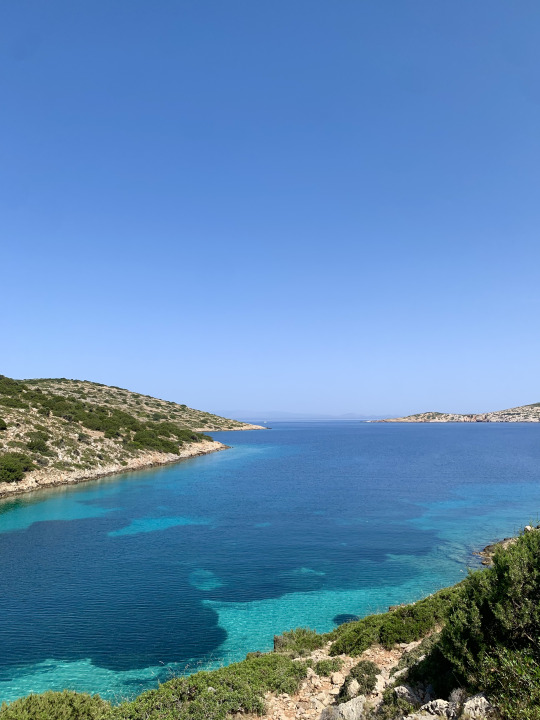
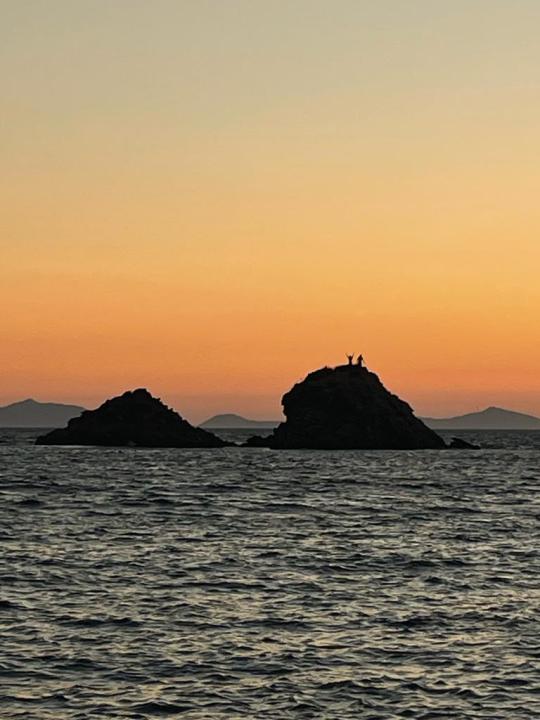
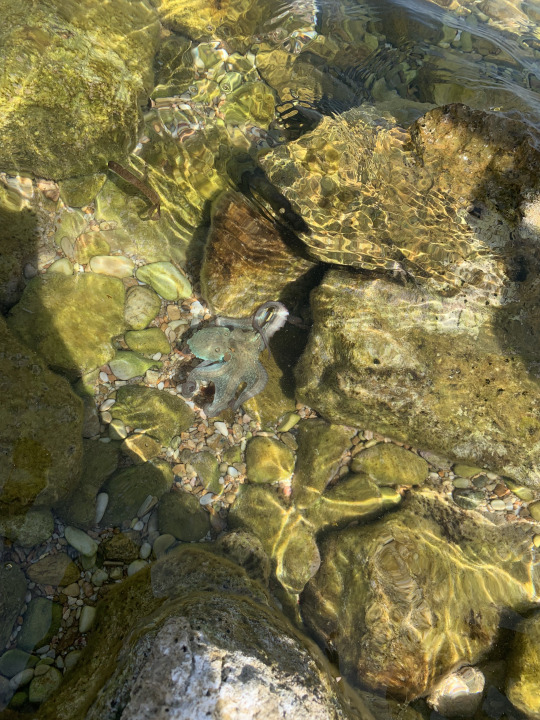
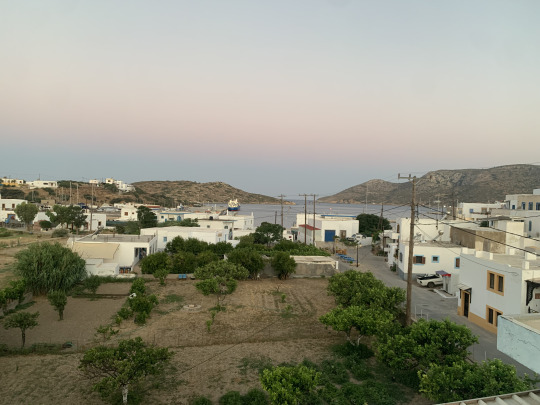
6 notes
·
View notes
Text
Unit 06: Nature Interpretation Through History
Given the interpretive nature of this class, I believe that an interpretation is subjective and depends on one's beliefs. Unpacking Edward Hyams's quote this week, I interpret his words to signify that a person, place or thing is without importance (merit) until it is given meaning or deemed with significance (integrity). It is to say that integrity gives it the opportunity and ability to be carried through time, from generation to generation (scattered throughout time). Consequently, knowledge is passed through history with memory.
I initially struggled to find this quote's relevance to the course content until I thought of my childhood. In seventh grade, my class went on a field trip to the Six Nations reserve on Grand River during our First Nations-focused history unit. As the textbook described, interpreting First Nations requires extreme vigilance because of the importance of maintaining a sensitivity to the fact that "specific places or landscapes can hold spiritual or religious meanings to indigenous groups" (Beck et al., 2018). Through the experience, one thing that stood out to me was the emphasis on the First Nations' spiritual connection with the nature and land they share and vice versa. With that overarching emphasis follows the history of that spiritual connection. One of which I remember involves the legend of the Three Sisters. A legend illustrating three women working in harmony and cooperating, void of competition, demonstrating how individuals' diverse talents unite to build a community through appreciation of individuality. The legend emphasizes that nature is not merely a collection of elements but a vibrant and dynamic system with spiritual significance. This legend justifies the paired planting of corn, beans and squash in their agricultural practices, passed from generation to generation of First Nations people, and then at the age of 12, into my knowledge and those of my classmates. It's living natural history!
Although not an interpretive site, our guide served as a storyteller in preserving this legend and the history of the people who lived in the area, their ancestors, where they have been and why they live the way they do. In this way, every time we find ourselves in nature, we must remember it likely holds history, whether geological, physical or cultural.
Acknowledging the significance of history in the natural world signifies the importance of regarding history in our world. While people often suggest not to focus on the past, I believe we can learn from it. Ruminating on past experiences is perhaps not the right approach to gaining knowledge. However, completely disregarding the past is to go without, often resulting in history repeating itself. This highlights the significance of the train and the station: our experience and acknowledgment of history in our present will become that of someone else's past. Our ability as a community to preserve stories, legends or even interpretations throughout history enables us to maintain the integrity of people, places, or things.
Reference:
Beck, L., Cable, T. T., and Knudson, D. M. (2018). Interpreting cultural and natural heritage: For A Better World. Sagamore Publishing.
0 notes
Text
Hey Abbey,
I find school the hardest time to appreciate everything around me because I'm usually ruminating on all of my tasks. Most of the time I often don't take the time to slow down because I don't know how I possibly can. This is the reason why I enjoy summer the most. Even when I'm at work I feel that everything is slower and much more relaxed.
Unit 5: Bits and Bobs
Reading there was no prompt this week was thrilling! I'm not as enthused after trying to rewrite this post 3 times, each with different topics. Taking a break from this weekly task, I scrolled through my camera roll as I do pretty often. I enjoy making albums on my phone like I do Spotify playlists. Scrolling through the albums today, I looked at one I do from time to time titled Bits and Bobs.
In the hustle and bustle of my life, I don't recall sitting and having a moment for myself, jumping between school, sports practices, volunteering, school clubs, homework, dinner and sleep. Repeat. My weeks were a cycle I could not escape. When I reached Grade 12, I was burnt out. My mind was consumed by how I was possibly going to write my IB exams worth 80% of my grade and balance all of the extracurriculars overflowing on my plate. Then, on March 13, 2020, everything in my life halted. For the first time since I was 5, I had no obligations! I could do ANYTHING I wanted, yet nothing crossed my mind. To be fair, like most people, my options were limited to my neighbourhood. For the first 3 months, I watched TV like it was my job. Honestly, it was ideal that I finally took a break to sit down and relax. However, once summer rolled around, and I quit my job as a couch potato, I enjoyed being outside the most, partly because I had spent 3 months indoors watching TV and partly because I had never had the opportunity to spend much time outside before. Whether riding my bike with my mom or going to the Escarpment with my dad, it was so far removed from anything I had ever done before. In this slower-paced environment, I discovered activities I had not realized I enjoyed. Further from these activities, I started to find value in being present, acknowledging the time and place I occupied, and taking everything in like a sponge. Importantly, what I can see, hear, touch, smell and taste. These became my bits and bobs.
Since embarking on university, it has been challenging to pause and catch my breath when my thoughts are racing with the numerous assignments I have to complete. In times like midterm season, I can't help but think how common it is for people to get caught up in the routine of their daily lives without taking the time to savor the present moment truly. Writing this blog post now and reflecting on 2020 reminds me that it is important to value the small moments of peace and contentment that I encounter day to day. For me, these seemingly insignificant "bits and bobs" are reminders to pause and reflect, urging me to slow down and find peace in the simple moments of life.
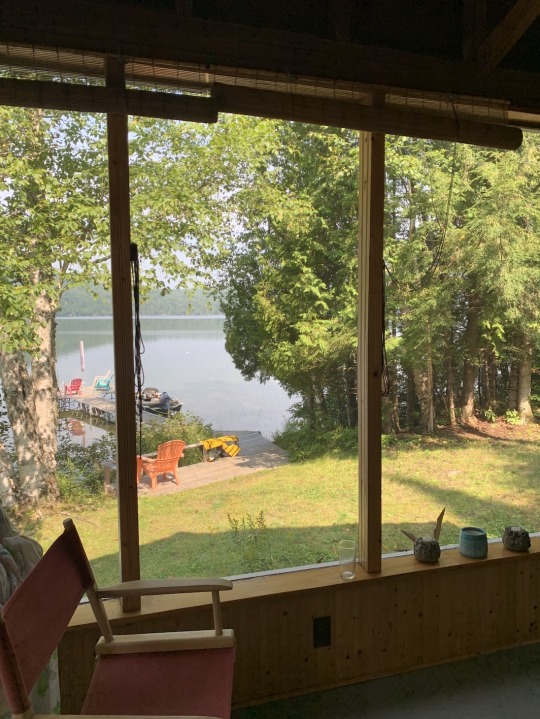
4 notes
·
View notes
Text
Hi Alayna,
I definitely wouldn't say I created bits and bobs but the title "spoke" to me when I first made the photo album. Nature is definitely a constant bit and bob for me. It's often where I find the most peace and feel the most present! Despite the desire to leave my phone behind in these moments I also enjoy capturing them :)
Unit 5: Bits and Bobs
Reading there was no prompt this week was thrilling! I'm not as enthused after trying to rewrite this post 3 times, each with different topics. Taking a break from this weekly task, I scrolled through my camera roll as I do pretty often. I enjoy making albums on my phone like I do Spotify playlists. Scrolling through the albums today, I looked at one I do from time to time titled Bits and Bobs.
In the hustle and bustle of my life, I don't recall sitting and having a moment for myself, jumping between school, sports practices, volunteering, school clubs, homework, dinner and sleep. Repeat. My weeks were a cycle I could not escape. When I reached Grade 12, I was burnt out. My mind was consumed by how I was possibly going to write my IB exams worth 80% of my grade and balance all of the extracurriculars overflowing on my plate. Then, on March 13, 2020, everything in my life halted. For the first time since I was 5, I had no obligations! I could do ANYTHING I wanted, yet nothing crossed my mind. To be fair, like most people, my options were limited to my neighbourhood. For the first 3 months, I watched TV like it was my job. Honestly, it was ideal that I finally took a break to sit down and relax. However, once summer rolled around, and I quit my job as a couch potato, I enjoyed being outside the most, partly because I had spent 3 months indoors watching TV and partly because I had never had the opportunity to spend much time outside before. Whether riding my bike with my mom or going to the Escarpment with my dad, it was so far removed from anything I had ever done before. In this slower-paced environment, I discovered activities I had not realized I enjoyed. Further from these activities, I started to find value in being present, acknowledging the time and place I occupied, and taking everything in like a sponge. Importantly, what I can see, hear, touch, smell and taste. These became my bits and bobs.
Since embarking on university, it has been challenging to pause and catch my breath when my thoughts are racing with the numerous assignments I have to complete. In times like midterm season, I can't help but think how common it is for people to get caught up in the routine of their daily lives without taking the time to savor the present moment truly. Writing this blog post now and reflecting on 2020 reminds me that it is important to value the small moments of peace and contentment that I encounter day to day. For me, these seemingly insignificant "bits and bobs" are reminders to pause and reflect, urging me to slow down and find peace in the simple moments of life.

4 notes
·
View notes
Text
Hey,
I loved your approach to the free prompt this week. It was enjoyable to hear about the benefits of employing new habits to enhance your daily routine this winter. Crafting a personalized routine can be challenging, especially when incorporating multiple commitments. However, with dedication, it can also be incredibly rewarding. When every new semester brings a new schedule, I find it hard the first 2 weeks to fit in everything I want to do, like go to the gym or hang out with friends. Overall, I think prioritizing yourself is the most important. Whether it's grabbing an extra hour of sleep when tired or squeezing in an additional reading before a class so we can hang out with friends later in the day.
To answer your question, I read a book called "Why We Sleep?" last summer to improve my sleep schedule. The book's insights, though alarming, explained the importance of sleep for memory, physical health, aging, etc. With each chapter, I began incorporating its recommendations into my nighttime routine, such as limiting caffeine intake, scheduling exercise and napping strategically during the day, and optimizing room temperature at night. Now, I get 8 hours of quality sleep each night without fail! It's so interesting how minor adjustments can create improvements.
Emily
05: The ways nature has impacted me? (free prompt)
I believe that spending time in nature offers numerous physical, mental, and emotional benefits. During the summer, I have complete access to nature trails and may spend countless hours outdoors. There may be obstacles such as weather and restricted access to these areas in the winter for our own safety. During the academic year, I attributed my lack of drive to a lack of time spent outside. I find that when I lose motivation, my other positive behaviours fall out of sync. I spend less time exercising, my dietary intake becomes more unhealthy, my sleep schedule becomes disorganized, and I feel inconsistent.
This year, I decided to take control of my winter, knowing that these changes usually occur during this time of year. I wanted to find strategies to maintain a balanced diet, get enough and high-quality sleep, and have a regular gym regimen while also attending school and maintaining good grades. So I'd like to share some changes I made to my routine to ensure improved habits.
My first major shift was to devote 30-60 minutes every day to outside activities. Now, I cannot say that I do this every day without fail, but I have been able to do so at least 5 days per week. It helps me to organize my thoughts without having to focus on schoolwork. During this period, I would either softly jog to get some physical activity in or take a walk along the trails in my neighbourhood. I would listen to a podcast, whether it was about amusement, learning, motivation, or self-discipline, to help pass the time. I believe this helped me relieve some of my tension and allowed me to unplug from school.
As we discussed several times throughout the course, the nature trails within the Aboretum made incorporating this practice into my day a breeze. After class, before leaving for home, I take a little walk through the Aboretum to reorganize after a few hours of classes. I sometimes have friends join me, which makes it much more pleasurable because we spend the most of our time on campus together studying. If you don't already, I recommend using the Arboretum to break up your day and get your mind off of school.
I also told myself this year that I would keep a consistent sleep routine. To ensure that I am properly refreshed, I try to get at least 8 hours of sleep each night. Again, are there times when I don't get a complete 8 hours? Of course. However, for the most part, I have been able to prioritize my personal health over academics, and I no longer have to pull all-nighters to complete projects. This has not only allowed me to be properly rested, but it has also taught me how to better manage my time during the day, decrease screen time, and focus on the tasks at hand.
As a fellow student, I understand how tough it is to maintain healthy habits when there are so many assignments due each week, but it is critical that we remember to take care of ourselves. You may even discover that prioritizing your personal health during the school year has an impact on your academic performance. Can any of you think of a moment when you implemented new habits and saw improvements in your daily life?
14 notes
·
View notes
Text
Unit 5: Bits and Bobs
Reading there was no prompt this week was thrilling! I'm not as enthused after trying to rewrite this post 3 times, each with different topics. Taking a break from this weekly task, I scrolled through my camera roll as I do pretty often. I enjoy making albums on my phone like I do Spotify playlists. Scrolling through the albums today, I looked at one I do from time to time titled Bits and Bobs.
In the hustle and bustle of my life, I don't recall sitting and having a moment for myself, jumping between school, sports practices, volunteering, school clubs, homework, dinner and sleep. Repeat. My weeks were a cycle I could not escape. When I reached Grade 12, I was burnt out. My mind was consumed by how I was possibly going to write my IB exams worth 80% of my grade and balance all of the extracurriculars overflowing on my plate. Then, on March 13, 2020, everything in my life halted. For the first time since I was 5, I had no obligations! I could do ANYTHING I wanted, yet nothing crossed my mind. To be fair, like most people, my options were limited to my neighbourhood. For the first 3 months, I watched TV like it was my job. Honestly, it was ideal that I finally took a break to sit down and relax. However, once summer rolled around, and I quit my job as a couch potato, I enjoyed being outside the most, partly because I had spent 3 months indoors watching TV and partly because I had never had the opportunity to spend much time outside before. Whether riding my bike with my mom or going to the Escarpment with my dad, it was so far removed from anything I had ever done before. In this slower-paced environment, I discovered activities I had not realized I enjoyed. Further from these activities, I started to find value in being present, acknowledging the time and place I occupied, and taking everything in like a sponge. Importantly, what I can see, hear, touch, smell and taste. These became my bits and bobs.
Since embarking on university, it has been challenging to pause and catch my breath when my thoughts are racing with the numerous assignments I have to complete. In times like midterm season, I can't help but think how common it is for people to get caught up in the routine of their daily lives without taking the time to savor the present moment truly. Writing this blog post now and reflecting on 2020 reminds me that it is important to value the small moments of peace and contentment that I encounter day to day. For me, these seemingly insignificant "bits and bobs" are reminders to pause and reflect, urging me to slow down and find peace in the simple moments of life.

4 notes
·
View notes
Text
Hey Sofia,
Your post was enjoyable to read, and it provided me with a new perspective on the connection between art and nature, as well as your viewpoint on the concept of "the gift of beauty."
Artists' ability to capture an experience through nature is an art in itself. Like you said, not just seeing its beauty but all of our senses that would make up that experience – sight, smell, touch, sound, and taste. Despite its vastness, I think the way that artists can capture nature makes it much more appreciable. Recognizing its many intricacies, as you did, is a valuable trait because it shows your appreciation for nature and inspires others to take care of our environment. As you discussed, that is perhaps an artist's most important role. Acting as a messenger, artists connect us to nature in whatever form: canvas, song, or even a series of projections in a large room!
I also wanted to mention that your post provoked me to consider this week's prompt. In particular, I did not consider art's ability to encourage acts of nature conservation. Based on your opinion on the role that artists have in nature interpretation, is there a specific art form that you think best captures nature? Or one that you use to capture something you may see?
Nature and its gift of beauty
Nature is this amazing, vast masterpiece, and we humans try to express it through art. But here’s the thing: who are we to do that, and how do we really get what’s so special about the “gift of beauty” nature gives us?
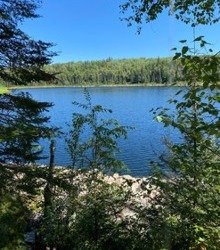
Art has always been our way of expressing feelings, telling stories, and capturing experiences, including those with nature. But trying to capture nature is not as simple as you might think. It’s huge, constantly changing, and frankly, pretty humbling. We’re just regular people, and nature is this massive intricate thing.
However, it’s our humanity that makes artists want to give it a shot. Artists use things like paint, words, or sculptures to try and show what makes nature so amazing. Every brushstroke or carefully chosen word is their way of turning the great beauty of nature into something we can see and feel.
Artists have this cool way of looking at things. They’re not just trying to make a pretty picture, they’re trying to capture the whole experience. Nature’s beauty isn’t just about what it looks like, it’s about how it makes us feel. It’s the colors at sunset, the sounds of leaves in the wind, the smell of flowers, basically, it’s a fully-on sensory experience.
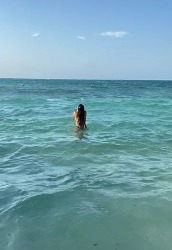
When we talk about the “gift of beauty”, we’re talking about all the amazing things nature gives us. It’s not just about looks; it’s about how nature connects with our emotions and spirit. Artists are like messengers, using their art to share this universal language of beauty and remind us of our role in taking care of the environment.
Art that interprets nature’s beauty isn’t just about looking at pretty things. It’s about understanding our bond with nature and realizing we have a job to take care of it. Artists help us see and appreciate nature more deeply, making us think about our connection with this incredible masterpiece called nature.
Beyond the stokes of a paintbrush or the lines on a canvas, the beauty interpreted by artists carries a deep and meaningful message. It’s a reminder that we are part of a larger, interconnected system, and our actions have consequences. As we immerse ourselves in the art inspired by nature, it prompts reflection on the impact human activity has on the environment. The beauty captured in these artistic expressions becomes a call to action, urging us to appreciate, preserve, and take in the natural world. In the hands of artists, the gift of beauty is not just observed but becomes a method of awareness, encouraging us to be better for our planet. So, the next time we are looking at a piece of art inspired by nature, let it not only captivate our senses but also inspire a commitment to taking care of the beauty that nature shares we us.
Sofia Gonzalez
1 note
·
View note